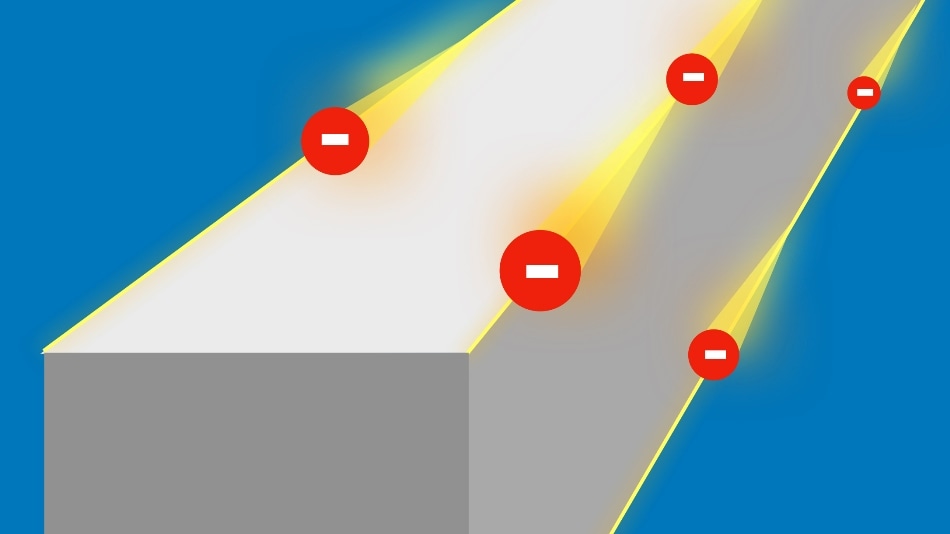Jun 4 2018
Physicists from the University of Zurich have been studying a new category of materials, known as higher-order topological insulators. In these crystalline solids, the edges conduct electric current with no dissipation; however, the remaining crystal behaves as an insulator. This phenomenon could be harnessed for applications in semiconductor technology and for developing quantum computers.
 Schematic of a higher-order topological insulator in the shape of a nanowire, with conducting channels on its edges. (Image credit: UZH)
Schematic of a higher-order topological insulator in the shape of a nanowire, with conducting channels on its edges. (Image credit: UZH)
Topology investigates the characteristics of solids and objects that are shielded against deformations and perturbations.
Materials recognized thus far include topological insulators; crystals that behave insulators on the inside but conduct electrical current on their edges.
The conducting surfaces are topologically shielded, indicating that it is not easy to bring them into an insulating state.
New Class of Materials: Higher-Order Topological Insulators
Theoretical physicists from the University of Zurich have now envisioned a new category of topological insulators with conducting properties on the surfaces of crystals instead of their surface.
The research group, including researchers from UZH, Princeton University, the Donostia International Physics Center, and the Max Planck Institute of Microstructure Physics in Halle, termed the new material category “higher-order topological insulators.”
The exceptional strength of the conducting edges renders them specifically intriguing: Impurities or disorder do not stop the current of topological electrons. When an impurity obstructs the current, it simply flows around imperfection.
Like a Highway for Electrons
Moreover, it is not necessary to specially prepare the edges of the crystal to conduct electrical current. Upon breakage of the crystal, the new edges also conduct current spontaneously.
The most exciting aspect is that electricity can at least in theory be conducted without any dissipation. You could think of the crystal edges as a kind of highway for electrons. They can’t simply make a U-turn.”
Titus Neupert, Professor at the Department of Physics at UZH
This characteristic of dissipationless conductance, evident from superconductors at low temperatures, is not shared with the earlier known topological insulator crystals with conducting surfaces, but is unique to the higher-order topological crystals.
Further Theoretical and Experimental Research Needed
The research of the physicists is still largely dependent on theoretical attributes. They have suggested that tin telluride is the first compound to exhibit such innovative characteristics. “More material candidates have to be identified and probed in experiments,” stated Neupert.
The physicists believe that in the times to come, nanowires made of higher-order topological insulators could be used as conducting paths in electric circuits. They could be integrated with superconducting and magnetic materials and used for developing quantum computers.